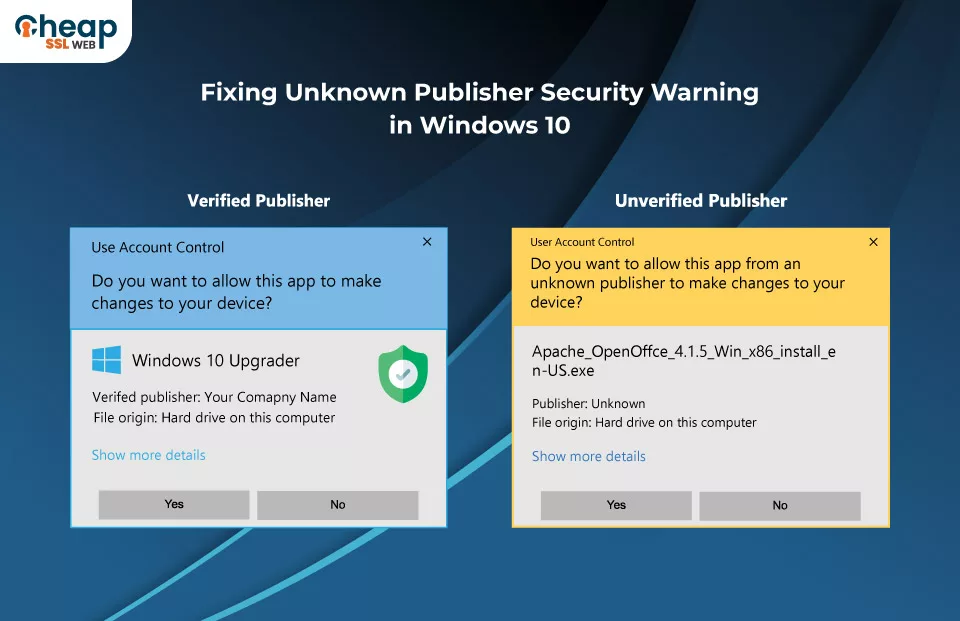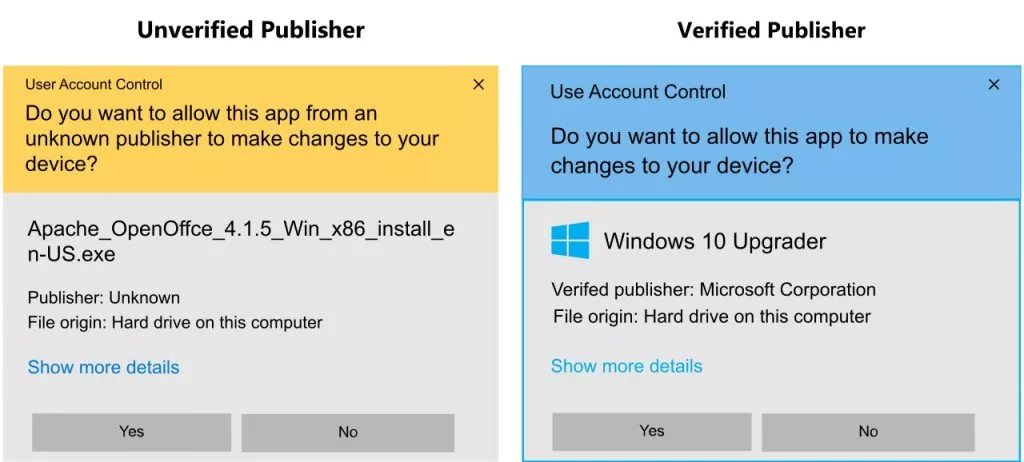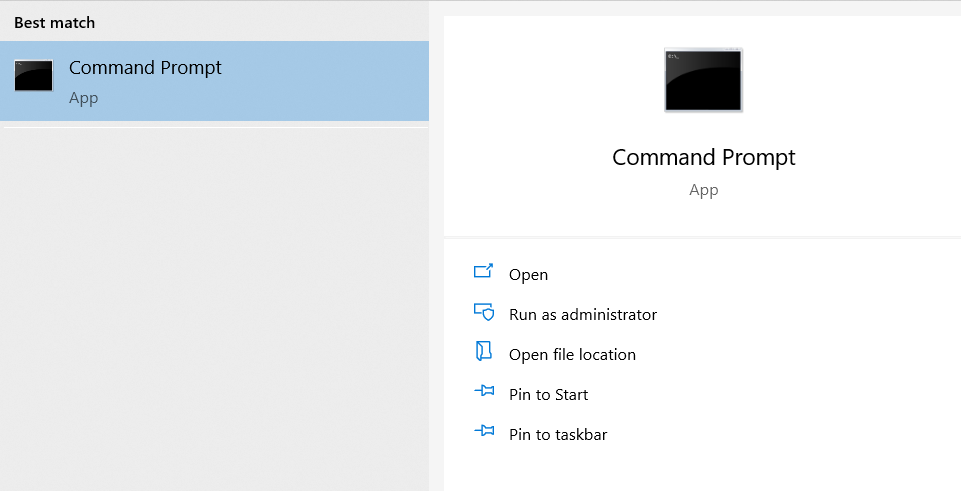Fixing Unknown Publisher Security Warning in Windows 10

Simple Solutions to Eliminate Unknown Publisher Security Warnings and Improve Software Security in Windows 10
According to a report published by “Positive Technologies” in 2020, 31% of the companies detected attempts to exploit software vulnerabilities. Using pirated copies of the software, downloading it from an unreliable source, or using the software, even if it’s not digitally signed, are just a few reasons that give birth to software vulnerabilities.
I would rigidly suggest you “STOP” following such practices and save your sensitive information from any risk or cyber threats.
What are Unknown Publisher Security Warnings?
Unknown Publisher Security Warnings are protection alerts that pop up when you try to install or execute a program or software that has not been signed using a digital certificate, such as Code Signing Certificate, or verified by a trusted software provider.
The main objective of these pop-ups is to warn the user in advance regarding the security issues or concerns they may face after installing or executing the program from an unknown publisher, as these programs may contain malicious codes, such as viruses and malware. Here’s an image that depicts an unknown publisher security warning pop-up:

Risks of Ignoring the Unknown Publisher Security Warning
“N” number of risks arise when you click the “Yes” button placed on the unknown publisher security warning pop-up message. Some of the most common risks are:
- Increased vulnerability to malware and viruses
- Increased risk of identity theft and financial fraud
- Possible corruption or damage to system files and software
- Compromised privacy and security of sensitive information
- Violation of company or organizational security policies and protocols
- Potential legal and financial repercussions if security breaches occur
How to Ensure that the Software is Legitimate?
The best and most trusted way to check the legitimacy of software is to verify whether the software in question is signed using a digital certificate, such as Comodo Code Signing Certificate and Sectigo Code Signing Certificate, or not.
Apart from this, you can also ensure the software is legitimate or not by using the methods mentioned below:
- Inspecting the source of the software
- Reviewing the publisher’s information and other vital details, such as software’s version and release date.
- Checking the reviews and ratings of the software in question.
How Does Code Signing Certificate Help Software Developers to Gain Trust?
A code signing certificate electronically (digitally) signs the software, confirming the software publisher’s identity as well as also ensuring that the code has not been tampered with since it was signed. This helps users trust that the software is legitimate and safe.
In lay terms, Code Signing Certificate helps software developers to gain trust by validating the publisher’s identity and verifying the authenticity of the software. Apart from this, using a code signing certificate also provides various other advantages that help in building trust, such as:
- It prevents warning messages from popping up.
- If someone tempers your digitally signed code, you can easily track what’s happening and fix it if anything looks suspicious.
- If your software is digitally signed, it mostly meets the platform requirements and thus can be easily distributed through recognized and trusted platforms, which in turn increases the trust factor.
What is the Process to Verify the Publisher Details of a Program?
To accomplish this, manually verify the program’s details and cross-check the gathered information against the information on the official website.
Follow these steps to verify the publisher details of a program manually:
- Right-click on the program and then select the “Properties option.”
- Navigate to the Digital Signatures tab and observe the info available – signer’s name, email, and timestamp of the certificate signing.
- Switch back to the Details tab and click on the View Certificate option.
- On the Details Tab, choose the Subject option in the list.
- In the following window, all the publisher’s details will be written.
- Now, cross-check this information with the information available on the official website to verify the publisher details of a program.
Read Also: How to Sign EXE File Using Code Signing Certificate?
How to Fix Unknown Publisher Security Warning in Windows 10?
Even if the software or program consists of a code signing certificate and you are still facing an unknown publisher security warning pop-up, try any one of the methods listed below:
- Fix the file registry
- Modify the UAC settings
- Perform a scan of the system
- Override the error message
- Eliminate the publisher from untrusted lists
- Disable file blocking
We will go through these methods and explore how to do them.
Solution 1: Fix the file registry
Follow the steps mentioned below to fix the file registry:
- In the search bar, type cmd.
2. Right-click the Command Prompt option and select Run as Administrator from the list.

3. Type sfc /scannow and press Enter.
4. Restart the system once the scanning process is completed.
Solution 2: Modify the UAC settings
Follow the steps mentioned below to modify the UAC settings:
- In the search bar, type Control Panel, and press Enter.
- In the Control Panel window, click on the System and Security option.
- Click on the Change User Account Control settings option in the right pane.
- In the User Account Control Settings window, drag the scroller downwards (Never notify).
- Restart the program again after clicking the OK button.
Solution 3: Perform a scan of the system
Follow the steps mentioned below to perform a scan on the system:
- In the search bar, type Windows Defender and press Enter.
- Click on the Virus & threat protection option in the right pane.
- From the Scan option list, select the Advanced Scan option.
- Restart the program again once the advanced scan is completed.
Solution 4: Override the error message
Follow the steps mentioned below to override the error message:
- In the search bar, type Task Scheduler and press Enter.
- In the Task Scheduler window, in the right pane, click on the Create Task option.
- In the Create Task window, in the Name field, enter a name of your choice.
- In the Security options section, check the checkbox against the Run with highest privileges option.
- Navigate to the Action tab, and click on the New option.
- In the New Action window, click on the Browse option.
- After selecting the program’s location, click OK.
- Navigate to the Settings tab, verify that the check box against the Allow task to be run on demand option is checked, and click OK.
- Right-click on the desktop, hover over the New option, and select the Shortcut option from the list.
- In the Create Shortcut window, in the Type the location of the item box, type schtasks /run /TN task name.
- Click Next and complete the shortcut creation.
- Right-click the created shortcut (new) and select the Properties option from the list.
- Click on the Change icon option and select an icon of your choice in the Change Icon for backup Folder window.
- Click the OK button.
Solution 5: Eliminate the publisher from untrusted lists
Follow the steps mentioned below to eliminate the publisher from untrusted lists:
- In the search bar, type Internet Options and press Enter.
- In the Internet Properties window, navigate to the Content tab.
- In the Certificates section, click on the Publishers button.
- In the Certificates window, click Untrusted Publishers.
- Select the untrusted publisher and click Remove.
- Restart the program.
Solution 6: Disable file blocking
Follow the steps mentioned below to disable file blocking:
- Right-click on the software in question.
- Uncheck the Block option.
- Restart the software.
Conclusion
Unknown Publisher Security Warnings are crucial alerts that pop up whenever you attempt to download or execute software that a trusted software provider does not sign. Overlooking these alerts can lead to various cyber issues – increased vulnerability to malware, financial fraud, identity theft, and many more.
To confirm that the software is legitimate, check whether it is signed with a digital certificate or use other methods such as – inspecting the source of the software or checking the publisher’s information. It is crucial to take unknown publisher security warnings seriously and only download software from trusted sources to prevent your system from compromising and putting sensitive data at risk.
